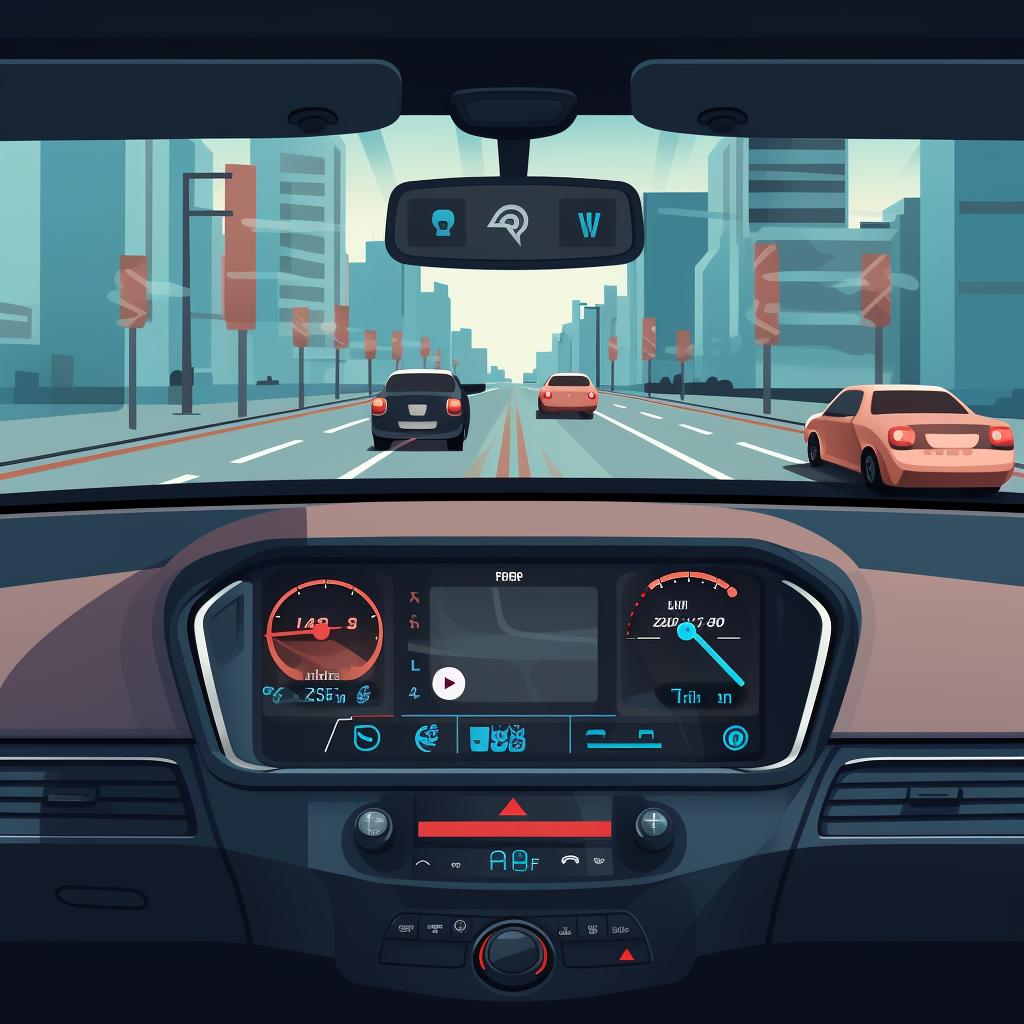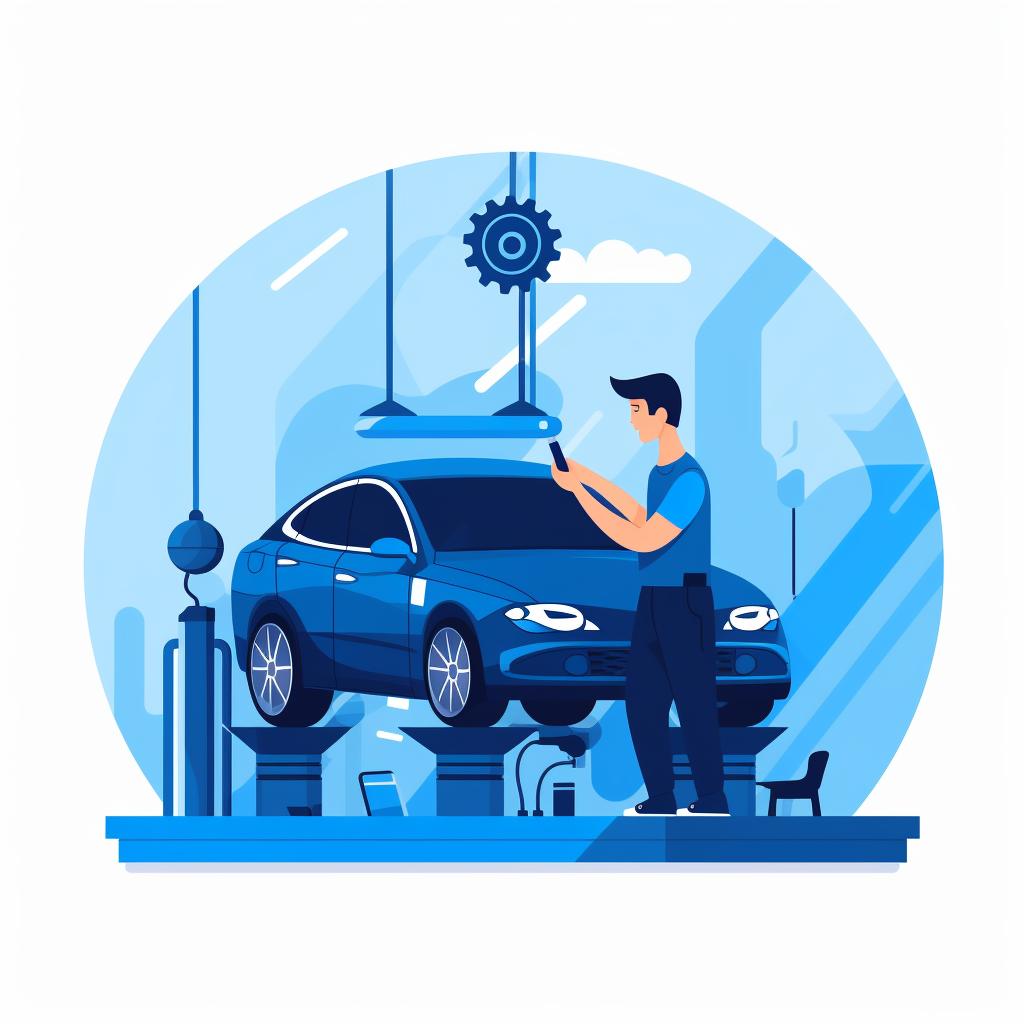Oliver Lane is a technology enthusiast and driving safety expert. He has spent the last decade researching and writing about the latest advancements in automotive technology and how they can improve driver safety and overall driving experience.
Driving aids like blind spot monitors and rear cross traffic alerts can be extremely helpful in enhancing driver safety. However, over-reliance on these technologies can pose several potential risks. Let's dive into the details.
While blind spot monitors and rear cross traffic alerts are designed to improve safety, it's important to understand their limitations and potential drawbacks. Understanding Blind Spot Monitors and Rear Cross Traffic Alerts can help you make informed decisions about their usage.
One of the risks associated with relying too heavily on driver assistance technology is that it may make drivers less attentive. To learn more about this topic, take our quiz.
🚗 Unmasking Your Car's Superpowers: Blind Spot Monitors & Rear Cross Traffic Alerts
Blind spot monitors use sensors to detect vehicles or objects in your blind spots, typically alerting you via a light on your side mirror or a sound. Rear cross traffic alerts function similarly, detecting vehicles approaching from the sides when you're reversing.
These technologies have undoubtedly improved driver safety, but they aren't foolproof. Over-reliance can lead to a false sense of security, potentially resulting in accidents. To better understand and use blind spot monitors and rear cross traffic alerts, take the quiz to test your knowledge. It's important to be aware of the limitations of blind spot monitors and rear cross traffic alerts to ensure overall road safety. Learn more about their effectiveness in preventing accidents here.
🔍 Are You Seeing the Whole Picture? The Hidden Risks of Blind Spot Monitors
Firstly, blind spot monitors might not detect smaller objects, like bicycles or pedestrians, especially if they're moving at high speeds. Secondly, these systems can sometimes give false alerts, or fail to alert the driver at all due to factors such as dirt on the sensors or poor weather conditions.
Percentage of Accidents Caused by Over-reliance on Blind Spot Monitors and Rear Cross Traffic Alerts
This chart shows that a significant number of accidents are caused by blind spots, which underscores the importance of manual checks. Blind spot monitors should supplement, not replace, traditional safety practices like shoulder checks and mirror adjustments.
🚨 Parking Lot Perils: The Unseen Dangers of Relying too Much on Rear Cross Traffic Alerts
Rear cross traffic alerts are useful, especially in crowded parking lots. However, they too have limitations. They might not detect fast-approaching vehicles or pedestrians in time, and their effectiveness can be compromised by factors such as obstructions or poor weather.
To better understand the limitations of rear cross traffic alerts, you can take the quiz on understanding the limitations of blind spot monitors and rear cross traffic alerts.
Additionally, if you want to learn more about how blind spot monitors and rear cross traffic alerts can help prevent parking lot accidents, you can check out the article on the topic.
Understanding the Limitations of Rear Cross Traffic Alerts
Test your knowledge on the limitations of rear cross traffic alerts. This quiz is designed to help you understand the potential risks of over-reliance on these safety features.
Learn more about 🚦 Understanding the Limitations of Rear Cross Traffic Alerts or discover other Driver Pals quizzes.
Take this quiz to test your understanding of the limitations of rear cross traffic alerts. Remember, being informed about your vehicle's safety features is key to using them effectively and safely. Take the quiz to learn more.
🛡️ Be Your Own Hero: Dodge Collisions with Tech Tools and Sharp Awareness
While these driver safety technologies have their limitations, they're still valuable tools when used appropriately. The key is to use these systems as aids, not substitutes, for safe driving practices. For more information on the effectiveness of driver assistance systems in improving safety, check out our article How Effective Are Driver Assistance Systems in Improving Safety?. Additionally, if you want to test your knowledge on the risks and benefits of driver assistance technologies, take our Understanding the Risks and Benefits of Driver Assistance Technologies Quiz.
While these driver safety technologies have their limitations, they're still valuable tools when used appropriately. The key is to understand how they work and how to use them effectively. Here's a step-by-step guide to help you do just that.
Learn more about 🚗 Effective Use of Blind Spot Monitors & Rear Cross Traffic Alerts 🚦 or discover other Driver Pals guides.
Follow this guide to learn how to use these technologies effectively. It includes steps on adjusting your mirrors correctly, understanding the technology, not over-relying on it, and ensuring regular maintenance. Remember, these aids are there to assist you, not replace your judgement and attention.
Follow this guide to learn how to use these technologies effectively. It includes steps on adjusting your mirrors correctly, doing shoulder checks, and understanding the alerts of your safety systems.
For optimal blind spot coverage, make sure to adjust your mirrors correctly. This will help you have a better view of your surroundings while driving.
Understanding the alerts of your safety systems is crucial. To learn more about blind spot monitors and rear cross traffic alerts, check out our comprehensive guide.
Additionally, if you want to know what technologies can make driving safer, we have a detailed article that covers the latest advancements in car safety technology.
By following these tips and utilizing the right technologies, you can enhance your driving experience and stay safe on the road.
🏁 The Journey's End: Reflecting on the Balance of Tech and Trust in Driving
In conclusion, over-reliance on driving aids like blind spot monitors and rear cross traffic alerts can increase the risk of accidents. These systems should be used as supplements to traditional safe driving practices, not replacements. Stay informed, stay alert, and drive safe!
How much do you rely on driving aids like blind spot monitors and rear cross traffic alerts?
Participate in this community poll and let us know your driving habits. Your responses will remain anonymous.
How much do you rely on driving aids like blind spot monitors and rear cross traffic alerts? Participate in this community poll and see how your habits compare to others'.



















